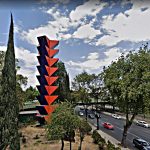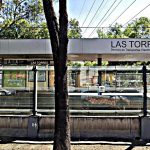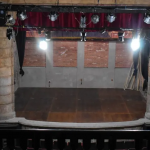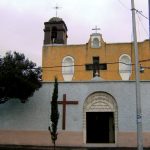
The Tasqueña Station on the Xochimilco Light Rail is one of the most legendary stations in Mexico City. At least, it’s the beginning of an adventure into the legendary Xochimilco.
The name of course, like with the Metro Station, refers to its position on the old Calzada Taxqueña. Travelers to Xochimilco need only arrive at Metro Tasqueña to transfer to the light rail. (You will need to pay another fare.) And people go for the famous canal rides, or simply to wander the historic center.
The light rail today stops at the old Huipulco station. This is just south of a major intersection (Renato Leduc & Calzada de Tlalpan) which long hosted La Luna bakery. It later became a department store, too. But for many years, the trams were known to stop at this traffic center referred to by many, simply as “La Luna.” That ultimately explains the station logo though one might be forgiven for thinking the moon refers to the silver mined in distant Taxco in the state of Guerrero. The name derives from that route.
The station marks the updating of the old tramlines that were partially replaced by the Metro in 1970. The trams continued to run here into the mid-1980s. The remains of the old tramline, then still running to Xochimilco, were then updated and that was the beginning of the light rail as we know it. This history is told in some detail at the Museum of Electric Transport.

Nearest at 0.08 kms.

Nearest at 0.44 kms.

Nearest at 0.45 kms.

An all but forgotten island of the ancient Texcoco Lake . . .

A charming neighborhood park in Tlalpan . . .

An exceptional mini-theater district in the heart of Churubusco . . .

A 24-hour flower market in a busy corner of Tlalpan's hospital district . . .

A tiny chapel recalls the long history of the Colonia Tránsito . . .